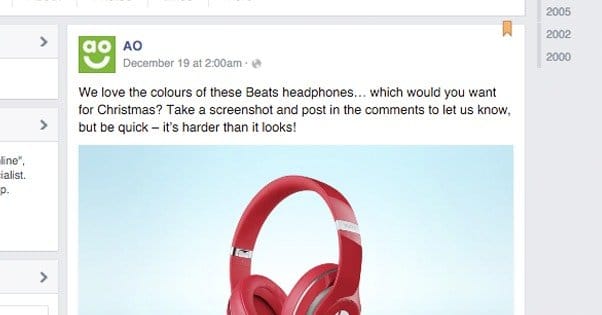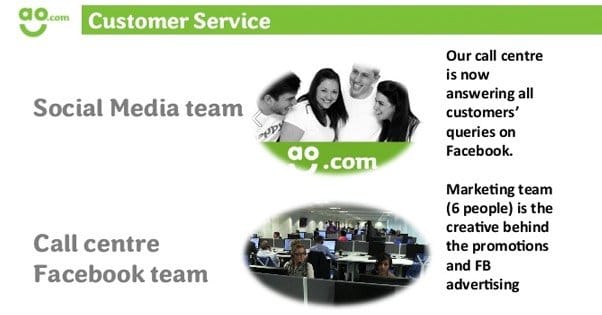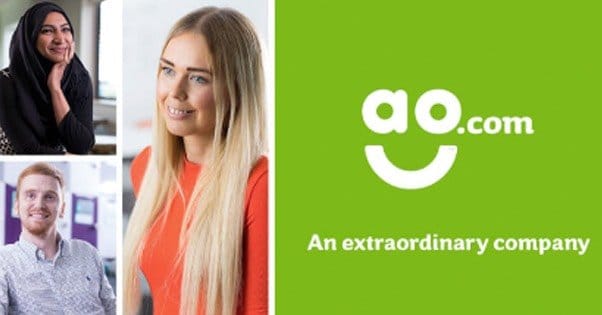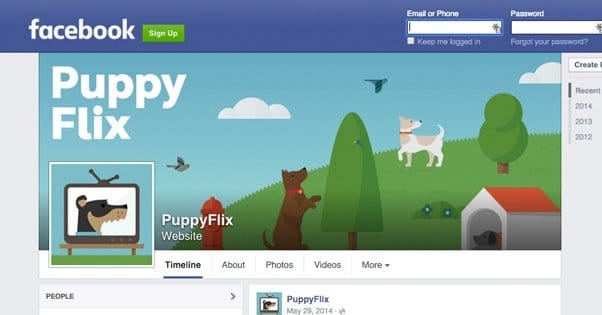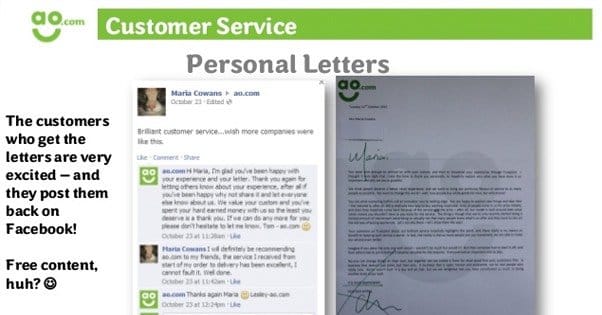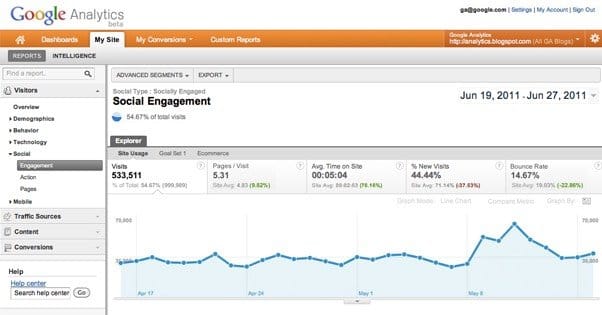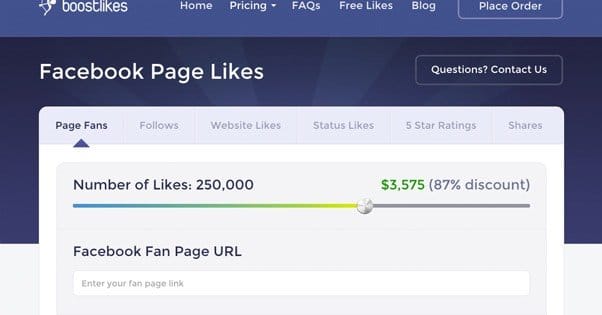 Written by ContentPowered.com
Written by ContentPowered.com
For many businesses, the idea of having a million Facebook followers is crazy. Many small businesses don’t even get that much business in a year, let alone concurrently. Yet if you can swing it, you can grow to those illustrious peaks, and you can reap all of the rewards of being a major brand.
Be aware before we dig in deep that this is going to be a long-term process. Unless you’re an established brand with a ton of off-Facebook traffic and you’re just picking up Facebook itself, you’re going to have to put in a lot of effort. Even with every excellent tip in the world, you probably won’t go from 1,000 likes to 1,000,000 in six months. Without the right help, you might not even be able to do it in two years. That’s a good thing! If you grow too fast, you might end up cutting corners or being unable to cope with demand, and the whole house of cards will collapse. By taking your growth slowly and organically, you can make sure your infrastructure is solid.
Oh, and some of these tips aren’t going to be directly relevant to Facebook. Facebook isn’t a platform you can use in isolation any more. Yes, there are tab apps and notes, and you could technically replicate the features of a blog and storefront, but you’d be shooting yourself in the foot by trying. It’s hard enough getting people to shop on a non-Amazon site these days; trying to do it through Facebook just screams amateur hour.
Create a Ton of Engaging Content
This is probably the number two thing you have to do. Number one is a little later. The reason is because you want people to trust you, to recognize you as someone who helped them, and as someone they can turn to. In order to do this, though, you need to find a unique perspective and value you can provide. One big example from Crazy Egg is Appliances Online, an online vendor for appliances. They talk about writing content about all sorts of topics, from strange things in fridges to recipes for food using new ovens, and more. This is what you’re going for; brand or product relevant content that provides something of value or interest to potential readers.
Note that in the time since the Crazy Egg post, AO has grown from just over 1m likes to 1.7m. I will be referring to them a few times, because they’re a great example of what to do in many ways.
Lead With Personality, Follow With Products
If you visit the AO Facebook page, a few things should stand out to you. For one thing, while their profile picture and cover photo have their logo on them, the cover photo largely features a collage of satisfied customers across a broad range of demographics. Secondly, look at their About section. You see “replies within an hour” and, in their general description, “Yossi and the team are always here to help.” You also see not, one, not two, but three copies of their URL in that small space.
For a massive multinational brand doing business with millions of people, AO is very personal, very personable, and very upfront. You know what you’re getting when you visit their page; an experience where you’re a priority. Which leads us to:
Make Customer Satisfaction Truly #1
How often have you heard a brand say something like “customer satisfaction is our #1 priority”? I’d wager about as often as you’ve talked about the topic to a brand representative. It’s corporate speak and it’s generally meaningless. All it comes down to is “we acknowledge that we need to placate our customers and make them feel wanted.”
In reality, very few businesses actually put their customers first, and it’s the ones that do that find the most success with social media. Only when you well and truly put customers first can you deeply engage with them and win them to your side.
Publish Content on a Regular Schedule
This is one area where conventional wisdom is perhaps not always the best. Everyone says to pick days and times to post and post without fail, and I agree, but I think you need a bit more flexibility. Think of your content planning as a skeleton or a framework. You have, say, four posts per week you absolutely need to make, and need to make at the proper times. Try to buff up your weekly posting to 8 or 10, though, and fill the rest with flexible posts that cater to trends, answer questions, engage with audiences, and flesh out your brand.
At the same time, make sure you always – and I mean always, not just during business hours or for a few hours each day – have someone on hand to engage with customers on your brand page. When a user posts a question, they should have an answer or a contact within an hour, regardless of time of day. This will be more and more essential as your audience grows, where just answering the previous evening’s questions can take all day.
Invest in Facebook Advertising
There is no shame in advertising, but you need to do your advertising right. In the vast majority of cases, you’re not going to get conversions from Facebook ads directly. This holds more true the larger and more expensive your product is. Only cheap, easy purchases tend to be made on a whim like that.
No, the general process is more like using Facebook to build brand awareness and to remind people of the products they want to purchase, and keeping yourself in their minds until they’re ready to purchase, at which point they seek you out themselves. This is difficult to track, because many users might come from direct traffic sources, not ads, so it won’t trigger conversion pixels and the like.
It’s best to use Facebook ads for two general purposes; growing page likes and reminding people of the interest they showed in products on your page.
Learn Detailed Audience Targeting
Audience targeting is perhaps the most hugely influential part of Facebook ads themselves, and can mean the difference between cheap growth and a waste of money. There are a lot of possible audiences you can target, and by “a lot” I mean “pretty much infinite.” Facebook has 1.3 billion monthly active users, and you can target them in nearly any combination.
I highly recommend that you read some detailed guides on Facebook ad targeting. There’s far more to cover than I can cover in just this small amount of space.
Make a Habit of Remarketing
Remarketing on Facebook involves putting a bit of tracking code on anyone who enters your storefront online and visits a product page. Keep track of what products they view – via different tracking codes for different products – and run ads targeting those audiences with customized ads. If someone visits your site looking at washers, you should run ads later reminding them that you sell washers.
You can take remarketing one step further and use it for passive upsell awareness too. Someone buys a washer? Wait a few months and remind them that you can sell them a matching dryer, or a handful of accessories to make using their washer easier.
Make Split Testing a Part of Your Soul
Everything, and I mean everything, can be optimized. Test variations against each other, all the time, forever. Seriously, you should never be running an ad without running a variation, and you can even distribute links around the web organically to different unpublished posts to test organic posts in a split way. Gradually, over time, split testing will become easier and you will learn an intuitive sense of what is and isn’t the direction to go. Until then, though, trust the data and always let science lead the way.
Don’t Forget Mobile, Target Mobile
Over half of all Internet traffic these days is done via mobile device, and that number is even higher for Facebook browsers. If you’re ignoring mobile both on your website and with your ads, you’re essentially running a marathon while tied to a tree. Sure, maybe you can uproot the tree and drag it along, but everyone else is running free. You don’t stand a chance. Plus, having a mobile version of your site is a Google ranking factor and will help with your site presence.
Hire Excellent People for Copy and Graphics
In the early days of running a blog and a social media profile or two, it’s easy enough to do it yourself, hire an intern to run it, or just have someone do it in their spare time. That won’t get you far, though. You have two options; either hire a dedicated social media team, or hire in-house staff and freelancers to work with you. A few good copywriters and a couple of graphic designers will help a ton, and a staff dedicated to handling customer reports is just as important for customer satisfaction.
Invest in Facebook Video
If you go back to AO’s page, you’ll see that in their most recent handful of posts, they have several videos. Some of them are produced by the AO team themselves, while others are promotional content for products they sell, produced by those brands. Either way, video is great as both a promotional tool and as a means for more engagement. The people who watch full videos on Facebook are the people you most want to target for conversion.
Promote the Facebook Like Box
The Facebook Like box is a bit of Facebook integration for your website, and it shows pictures of people who have liked your page. Even better, when a user visits your page and they have friends who have liked your page, Facebook will seed some of their pictures in with the random other people. This helps give some social proof to the user, so they trust you more, because people they know trust you enough to follow you. Take advantage of this and make sure the Facebook Like box is prominently positioned on your site.
Solicit Testimonials from Satisfied Users
Social proof is some of the best, most useful, and most important content you can have that isn’t actual content. It’s generally reserved for landing pages, but you can have it on a sidebar and on your Facebook page as well.
Testimonials on Facebook show up in the reviews section, and of course in posts people make to your wall. Regardless of where it is, try to solicit it as much as possible. I recommend a two-step form. Send a message as a follow-up to people who purchase, and ask them to rate you from 1 to 5 stars. If they rate you 1-2 stars, have the form progress to a contact form so they can have their issues fixed. If they rate you 4-5 stars, progress the form to solicit a testimonial. “Tell us what you liked most about your experience!” You can even offer a gift card or entry into a drawing in exchange.
Track Analytics On and Off Site
Analytics on your website will be through Google Analytics, nine times out of ten. Learn how to use it, develop custom reports, and love it. Analytics on Facebook will be through Insights, and it too will have a ton of valuable information for you. You can then combine the two with UTM parameters, conversion pixels, and other forms of tracking. All of this gives you data you can use to fuel more split testing, customer responses, contests, new products, and all sorts of other improvements.
Make Sure Your Infrastructure Can Handle Expansion
If you’re trying to reach one million likes, that means you have a lot more people dealing with your business, which means you need to be able to handle that kind of volume. Running out of stock, cutting corners on shipping, and manufacturing cheap products are all ways to kill a brand reputation that can be very hard to recover from. As you grow, make sure to improve your infrastructure along the way, so you can cope with surges of growth around holidays or centered around viral content without issue.
Purchase Likes From Reputable Sources
I’ve talked at length about advertising on Facebook, but you can also advertise outside of Facebook to get more Facebook likes, and in most cases (unless you have an endless ad budget), you’ll have to.
Reputable like sellers essentially run ad campaigns outside of Facebook’s circles, so you get exposure to a lot of people who might not otherwise see you. They’re perfectly legitimate likes, just in audiences you wouldn’t normally reach. Buy a handful of these on an ongoing basis and you can dig the spurs in your organic growth.
Show Customer Appreciation
By showing your customers you appreciate them, you build a reputation as a brand that cares. There are all sorts of ways you can go about this, too. You can run customer appreciation events at certain follower milestones. You can run monthly or weekly user features on Facebook, showcasing how your products are used and how they help people. You can even just simply, publicly thank your users for following you from time to time.
Run Contests, Sales, and Online-Only Benefit
Anything you can to do incentivize users to follow you on Facebook, do. Measure it, make sure it works and is helpful, but do it. That includes posting Facebook-exclusive deals, contests, and benefits. You can’t force users to like a page to access your content, but you can exclusively advertise it on Facebook so people are encouraged to follow you to keep up with deals.
Build Goodwill by Sponsoring Events, Improvements, and Charities
This is all various ways to build a reputation as a charitable, proactive, community-focused and helpful organization. These are all qualities that people like in brands. If you support a cause they support, they’re more likely to support you.
